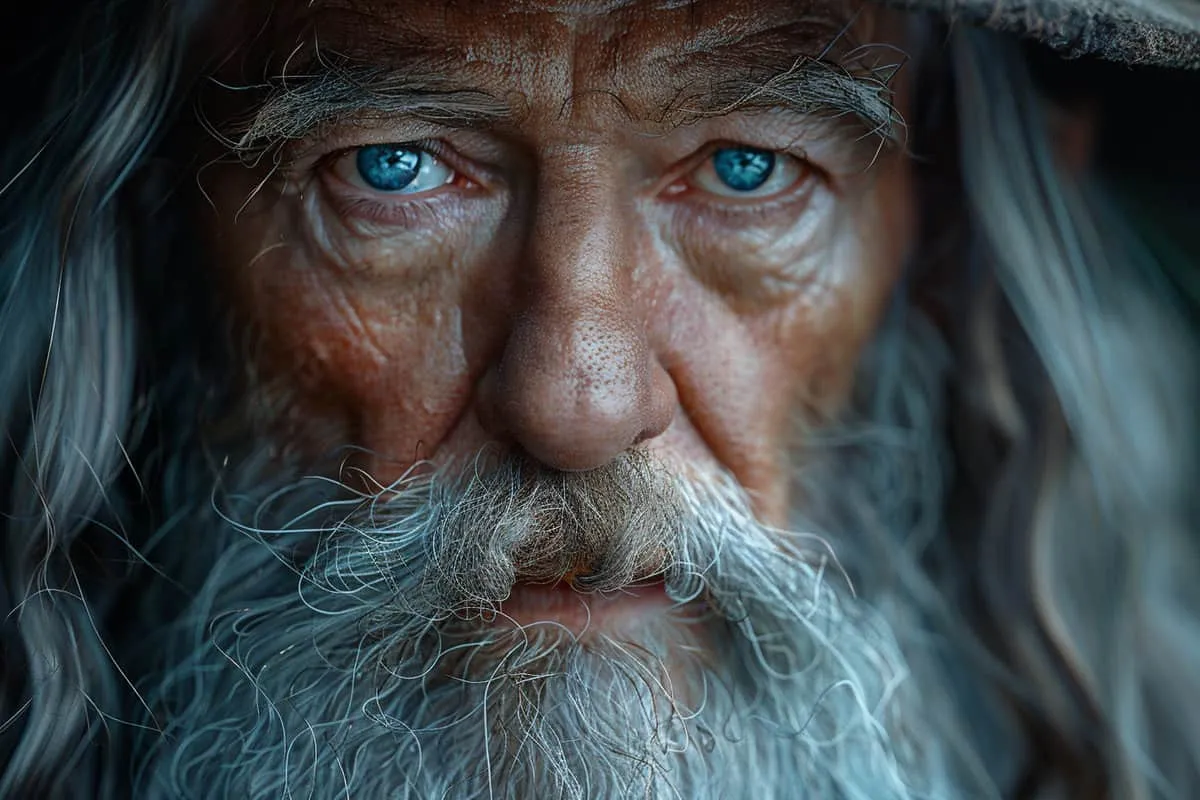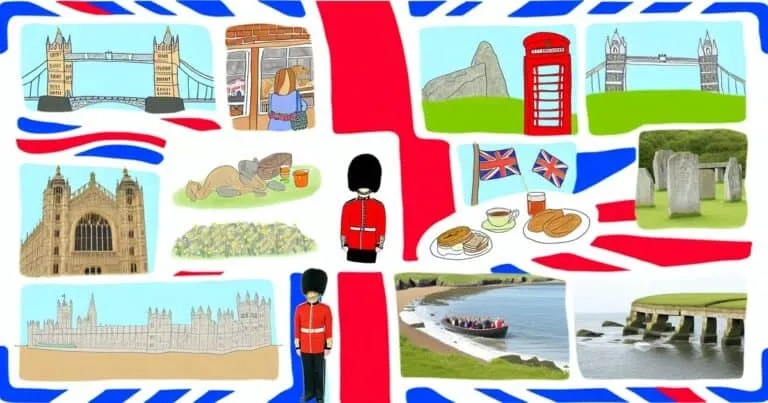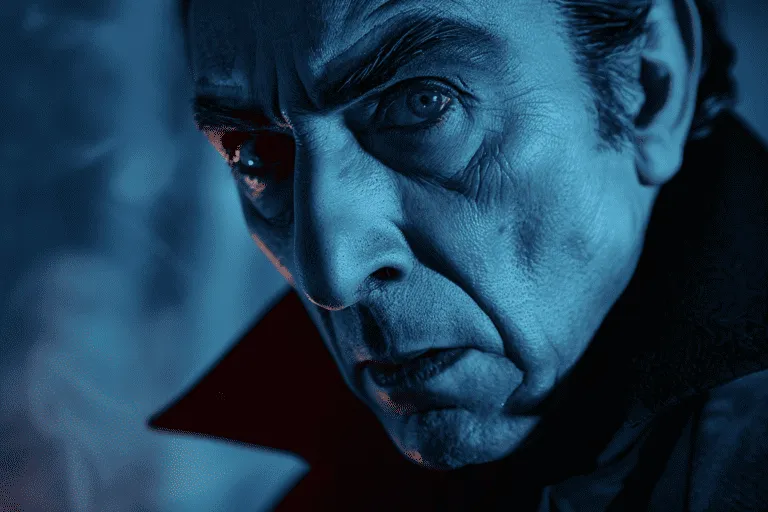10 Gandalf Facts (Unveiling the Wizard’s Journey & Secrets)
Dive into the mystical world of Middle-earth with some mind-blowing Gandalf facts that even the most die-hard fans might not know.
From his secret origins to his epic battles and wise sayings, these tidbits will deepen your appreciation for one of fiction’s most powerful wizards.
Whether you’re a long-time devotee or new to the tales, each fact is a doorway to understanding Gandalf’s complex character and his pivotal role in both literature and cinema.
Ready to explore the hidden depths of this iconic figure? Scroll down as we reveal our top picks that are sure to enchant and surprise you.
1. Gandalf’s Origin in Valinor as Olórin
Gandalf wasn’t always the grey wizard we know from Middle-earth. His story began far away, in a place called Valinor. This is a magical land where powerful beings, known as the Valar, live.
In this enchanting realm, Gandalf was not known by the name we’re familiar with. He went by Olórin. As Olórin, he was one of the Maiar spirits. These spirits are like helpers to the Valar.
Among all his tasks in Valinor, Gandalf served two very important figures: Manwë and Varda. They are considered the highest among the Valar because of their wisdom and leadership.
Manwë is often seen as a king or ruler over this special land and its inhabitants. He represents authority and fairness. Varda is his companion who brings light to darkness with her incredible power.
So why did Olórin end up leaving such an amazing place? Well, his journey to Middle-earth was all about helping others fight against darkness and evil forces threatening peace and harmony.

2. Gandalf’s Many Names Across Middle-earth
Gandalf, a key figure in Middle-earth, is known by many names. Each name reflects his deep relationships and extensive knowledge of the different cultures within this vast world.
The Elves call him Mithrandir, which shows their respect for him. This name highlights Gandalf’s wisdom and his role as a traveller who brings important news.
To the Dwarves, he is Tharkûn. This name underlines the trust between Gandalf and the Dwarven communities. It signifies his involvement in their affairs and how they see him as an advisor.
In the south of Middle-earth, people know him as Incánus. This name suggests mystery and implies that even in distant lands, Gandalf has left a mark through his actions and guidance.
These titles are more than just names; they are symbols of respect earned from various peoples across Middle-earth due to Gandalf’s old norse-like qualities: bravery, wisdom, and guidance.
3. The Meaning Behind the Name “Gandalf”
“Gandalf” isn’t just a name pulled out of thin air; it carries deep meaning. This unique name translates to “Elf of the Wand” or “Wand-elf.”
Imagine that – an elf with the power and wisdom wielded through his wand, guiding and protecting those around him. It’s not just about magic but also about leadership and guardianship.
The roots of Gandalf’s name stretch back to Old Norse mythology, a treasure trove of epic tales and powerful beings. By borrowing from such rich lore, Gandalf’s character is imbued with ancient wisdom and strength even before we dive into his adventures in Middle-earth.
Reflecting on his role as a guide and protector, it’s clear why “Gandalf” was the perfect choice for this wise wanderer.
He doesn’t just use magic; he guides heroes like Frodo Baggins on their perilous journeys, protects entire realms from darkness, and uses his knowledge (or wand) to light the way forward.
4. Gandalf’s Role as a Member of the Istari
Gandalf wasn’t just any wizard. He was one of five Istari sent to Middle-earth with a critical mission: to fight Sauron, the dark lord. This group of wizards had a tough job, but Gandalf was up for the challenge.
His main task? To guide and help the inhabitants of Middle-earth in their struggle against darkness.
Imagine being in school and having that one teacher who always knows how to push you towards doing your best—that’s kind of what Gandalf did, but on a much larger scale.
However, there were rules. Despite his power, Gandalf couldn’t just wave his staff and fix everything. The Istari were forbidden from using their great powers openly or dominating the wills of others.
It’s like playing a video game where you can’t use your strongest move; you have to find smarter ways to win.
This restriction meant Gandalf had to work behind the scenes a lot. He encouraged leaders, gave wise advice, and nudged heroes like Frodo Baggins along their paths without taking over completely. It was all about helping people help themselves.

5. The Transformation from Gandalf the Grey to Gandalf the White
Gandalf’s battle with the Balrog is a pivotal moment in both the literary and film adaptations of “The Lord of the Rings.” This epic fight led to his fall into darkness, only for him to emerge reborn as Gandalf the White.
This transformation wasn’t just about changing colors; it marked his evolution into a being of greater power and wisdom.
Upon returning, Gandalf took over Saruman’s role as head of the White Council. Saruman had fallen from grace, succumbing to evil, leaving a void that only someone of Gandalf’s new stature could fill.
As Gandalf the White, he symbolized purity and was granted a higher level of authority among those fighting against Sauron.
This change also reflected in his approach towards guiding Frodo and the whole company on their quest.
Where once as Gandalf the Grey he offered advice more subtly, now he directed with more confidence and clarity – steering them through dangers with an almost prescient understanding.
6. Gandalf’s Immortality and Powers as a Maia
Gandalf isn’t just any old wizard with a fancy staff and pointy hat. He’s actually an immortal spirit, part of the grand design by Ilúvatar, the supreme being in Tolkien’s universe. This means he’s been around since before time as we know it began.
What sets him apart are his unique powers, especially his ability to manipulate fire and light.
Imagine lighting up a dark cave or sending signals across vast distances using nothing but your willpower—that’s Gandalf for you.
But perhaps more impressive is his power to inspire courage and hope in others.
It’s not all about flashy magic; sometimes, it’s about lifting spirits in the darkest times, making people believe they can overcome insurmountable odds.
7. Gandalf’s Key Role in the Quest to Destroy the One Ring
Gandalf was more than just a wise old wizard in Middle-earth; he was a pivotal figure in the quest to destroy the One Ring.
As an orchestrator of the Fellowship of the Ring, he brought together a diverse group of individuals united by a common goal: to prevent Sauron from reclaiming his full power.
His guidance didn’t stop there. Gandalf personally led Frodo Baggins, the ring bearer, on parts of his perilous journey towards Mount Doom.
His wisdom and foresight were instrumental in navigating through treacherous paths and avoiding numerous threats that lay in their way.
Moreover, Gandalf played strategic roles in battles against Sauron’s forces.
Whether it was rallying troops for battle or devising plans that would give them an edge over seemingly insurmountable odds, his contributions were crucial for their victories.
8. Gandalf’s Friendship with Hobbits, Elves, and Men
Gandalf’s relationships span across Middle-earth, making him a beloved character among the Free Peoples. His friendships are not limited by race or realm; instead, they’re built on mutual respect and shared goals.
He has a special place in his heart for Hobbits. Gandalf admires their simplicity and unexpected courage.
This fondness is evident in his close bonds with Bilbo and Frodo Baggins, whom he entrusts with the perilous journey of destroying the One Ring.
Their success further proves that even the smallest beings can change the course of history.
Elves and Men also hold Gandalf in high esteem. His wisdom and power are undeniable, earning him respect among these races.
Elves appreciate his deep knowledge and understanding of Middle-earth’s magic and mysteries. Meanwhile, Men look up to him as a guide during dark times, often seeking his aid against enemies like orcs.
Gandalf’s ability to unite different peoples against common foes showcases his diplomatic skills and strategic mind.
9. The Symbolism of Gandalf’s Pipe and Staff
Gandalf’s pipe and staff are not just accessories; they carry deep meanings.
The pipe, often seen with Gandalf during moments of reflection, stands for contemplation and wisdom.
It’s like when we sit back and think deeply about something before making a decision. Gandalf does this too, but with his pipe, showing he’s wise and thoughtful.
On the other hand, his staff is more than a walking stick. It represents authority and magical ability.
Imagine having a tool that shows you’re in charge and can do amazing things – that’s what Gandalf’s staff is for him. It’s his way of showing he’s not just any wizard but one with great power.
Both these items have become iconic symbols of Gandalf’s character throughout the stories.
When you see someone holding a long pipe or carrying an old-fashioned staff in movies or books, your mind might instantly think of wizards like Gandalf. They’ve become shorthand for “wise person who can do magic,” thanks to how well they represent these aspects of his personality.
10. Gandalf’s Final Departure to the Undying Lands
Gandalf left Middle-earth from a place called the Grey Havens. This was not just any departure; it was his final goodbye to a land he had served for so long.
He didn’t leave alone. With him were some very special friends – Frodo, Bilbo, Elrond, Galadriel, and other ring-bearers.
Imagine this group as old warriors who’ve seen many battles, finally getting a chance to rest.
This journey wasn’t just about leaving; it marked the end of Gandalf’s mission in Middle-earth.
Think of it as finishing a really long and important project at school or work. It’s that feeling of accomplishment but also sadness because it’s over.
They were heading back to Valinor, also known as the Undying Lands.
It’s kind of like going back home after being away for ages but knowing you won’t return again.
Why did they leave? Well, their time in Middle-earth had ended with the defeat of all their enemies and completion of their tasks.
Now, they could go back north towards peace and rest without worrying about another battle or mission.
Frequently Asked Questions
What’s the deal with Gandalf’s origin?
Gandalf wasn’t always the grey-bearded wizard we know. Originally, he was a spirit named Olórin in Valinor, which is basically heaven for Elves and some VIP spirits.
Why does Gandalf have so many names?
In his travels across Middle-earth, different folks gave him different names. It’s like having nicknames from every city you’ve visited. Pretty cool, right?
What does “Gandalf” actually mean?
“Gandalf” translates to “Elf of the Wand” or “Wand-elf” in Old Norse. It hints at his magical prowess and possibly his affinity with Elves.
How did Gandalf become part of the Istari?
He was handpicked as one of the Istari. They were a group sent by higher powers to aid against Sauron’s threats. Think of it as being drafted into an ancient mystical A-team.
Can someone explain how Gandalf turned from Grey to White?
After battling it out with a Balrog and sorta dying, he got promoted. Returning as Gandalf the White, he became top dog among wizards. It’s like getting an upgrade after surviving something epic.
Is Gandalf really immortal?
Yep! As a Maia (think lesser god), death isn’t quite permanent for him. He has some serious staying power thanks to his divine origins.
How crucial was Gandalf in destroying the One Ring?
Without him pulling strings and nudging folks towards bravery and sacrifice, Frodo’s quest could’ve been doomed from day one.
He’s like that friend who knows exactly how to motivate you when things get tough.







